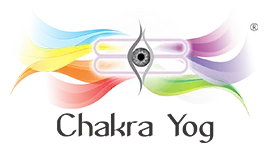Rudraksha
Table of Contents
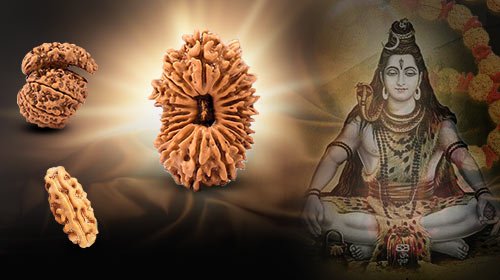
Rudraksha are sacred beads that holds very high spiritual and medicinal values. These beads bless the person with physical and mental health and enhance one’s spiritual quotient. The word Rudraksha is derived by the combination of two words Rudra (Lord Shiva) and Aksha (Tears) that as a whole denotes Lord Shiva’s tears. Lord Shiva meditated for the welfare of all the living creatures and when he opened his eyes he saw suffering and pain all around. Because of the intense sorrow, tears fell off his eyes that were destined to wipe away the tears of the mankind. Those tears when fell on the ground turned into trees of Rudraksha.
Rudraksha trees are commonly found in the areas between the foothills of Himalayas, Ganges plains and in Indonesia. They acquire blue colored fruits. The upper coating when removed with the help of a brush or sand breakthrough the seed which is known as the magic bead, Rudraksha.
The divine qualities of this holy bead were first found in ancient Hindu scriptures. They are popular traditional healing beads extensively used to treat a several diseases and also purify the wearer spiritually, mentally and physically.
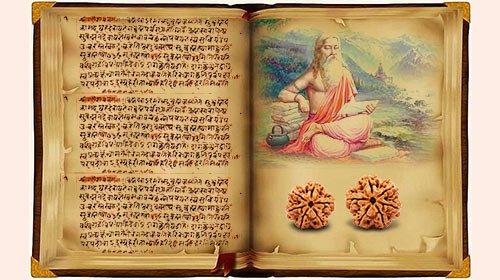
There are numerous conceptions in ancient Hindu scriptures about the origin of Rudraksha. But all of them are centered on Rudra (Lord Shiva) & his Akshas (Tears). The Holy Puranas, Jabalo Upanishad and Srimad Bhagvatam and many other ancient texts glorify Rudraksha beads.

A person who wears all Rudraksha becomes become Me I So, one should attempt from all levels to wear the divine Rudraksha II
– Shiva in the Padma Purana

Even Rudra attained Rudrahood only after wearing Rudraksha beads I Saints achieve the ultimate truth and Brahma attains Brahamatav.
Thus there is nothing higher than wearing Rudraksha beads in this world II
– Padma Purana
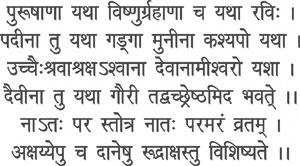
Just like Vishnu amongst men, Surya amongst all the planets I
Ganga among rivers, Kashyap among human I
Shiva amongst all Gods, Parvati amongst all Goddesses is Highest praised II
Similarly Rudraksha is the Highest amongst All I
Hence there is no Sloka or fast above Rudraksha II
– Shrimad Devi Bhagwatam
Rudraksha is available in different sizes and forms. Research and experience of clients have proven that size does not matter as far as the power and efficacy of the bead is concerned. The bead needs to be ripened, healthy, and devoid of insect bites.
The form, i.e., mukhis, determines the characteristics of a specific Rudraksha. Every Rudraksha has facets, or mukhis, which are found in different numbers. The Rudraksha bead has a top portion from where the line originated. This is called Brahma. The middle portion has the largest diameter and is known as Vishnu, while the bottom portion, where the lines end, is known as Shiva. As a result, every Rudraksha is born with the mighty characteristics of GOD’s three main forms, namely Generator (Brahma), Operator (Vishnu), and Destructor (Mahesh or Shiva).
Rudraksha is classified into more than 21 different types on the basis of mukhis. In ancient epics like Shiv Purana, Shrimad Devi Bhagwat, and Padmpuran, etc., Rudraksha up to 14 mukhis have been described along with their effects and purposes for which they are useful. Higher Mukhi Rudraksha from 15 to 21 mukhis has also been found in later texts like Katyayani Purana. Beads higher than 21 mukhi have also been found in recent years. There are other Rudrakshas like Gauri Shankar (two Rudraksha beads naturally joined in the center), Ganesha (a Rudraksha having a trunk like a protrusion on its body), Sawar (a Gauri Shankar in which one bead has only one line or mukhi) or Trijuti (three Rudraksha beads naturally joined together).
- Start with sprinkling the holy waters of Ganga (Ganga jal) on the beads.
- Offer Sandal paste to the beads and chant ‘Om Nama Shivay’ 9 times.
- Offer unbroken rice chanting 'Om Nama Shivay' mantra 9 times.
- Offer incense fumes, chanting the Beeja mantra of the beads 9 times.
- Finally offer prayers to them and remember the beautiful form of Shiva wearing the beads all over His body.
You can also view the video featuring the steps mentioned above. Benefit of daily puja procedure is that it keeps your bead energized, fresh and vibrant with spiritual strength.
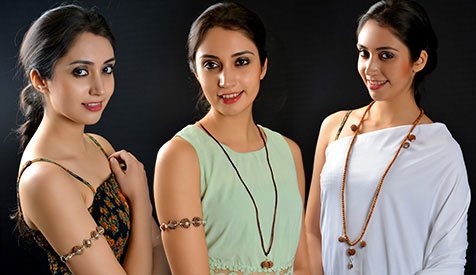
These beads are not only worn by Hindus or saints but worn by men and women of all faiths and religions. They stand out as the most effective option in healing, success and self-empowerment. These mystic beads are easy to wear and can be worn in different forms like Rings, Pendants, Malas, Bracelets or Armlets. There are no taboos associated with wearing and one may wear all the time on body. They are suitable for children for their education, teenagers for self-confidence and career people for success and for meditators for aligning their mind, body and senses to the Soul. One needs to just wear them on body and minimal maintenance is required.
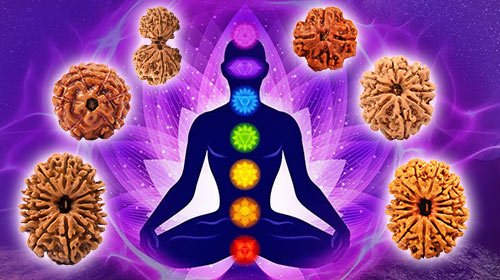
Different mukhi Rudraksha beads work on specific Chakras and balance them in a miraculous period of 7-8 days. They create resonance with the chakra and heal the blockage. For this knowledge of Rudraksha Ratna Science Therapy is important. Rudraksha beads have always been used by sages and monks in their prayers as well as meditation routines as they provide concentration and elevation of consciousness. Studies suggest Rudraksha holds electromagnetic, para-magnetic, inductive dia-magnetic and dynamic polarity or the ability to change its polarity. Rudraksha apart from the Ayurvedic properties also have anti-ageing properties based on their electromagnetism.
Rudraksha beads have many powerful properties in releasing stress and pain and transforming one’s personality and outlook in a positive way. As different Chakras affect different bodily functions thus different Rudraksha beads are used to treat different physical, mental and emotional disorders.

- Cure migraine
- Control high blood pressure
- Relief in heart ailments
- Do away with back and bone pains
- Heal throat disorders
- Influence the central nervous system by releasing electrochemical impulses
- Helps brain unleash positive mood-making chemicals
There is nothing on this planet that matches the natural benefits of wearing Rudraksha. A lot of herbal products of medicinal value are made out of the outer skin of the fruit, leaves and bark of the Rudraksha. But further research on this remains to be done.

Rudraksha beads are used today to cure numerous physical and mental ailments. The beads immediately affect the system and aid in the healing process.
- Balances the body chakras
- Releases fears and stresses
- Mitigates the ill effects of unfavorably positioned planets
- Mitigates the effects of Karma
- Protects from uncertainties & accidents
- Relaxes the mind by bringing focus
- Aids in memory and decision making
Since time immemorial, Rudraksha not only eliminates the fear of untimely death but people wear Rudraksha for attainment of good health, wealth and salvation. Some people keep Rudraksha in the altar for the well being of the entire family. Rudraksha being an integral part of Lord Shiva is very dear to all the devotees of Shiva. This miracle bead of nature helps get rid of the pain and sufferings of the mankind and fulfills the desires and wishes of the wearer.
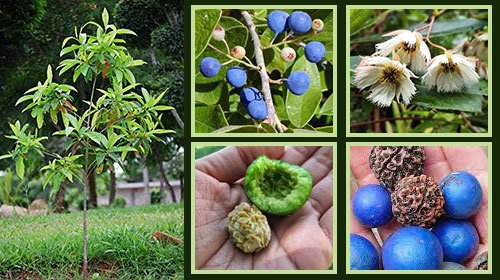
Scientifically known as Elaeocarpus ganitrus from the tiliaceae family, Rudraksha is a large broad-leaved tree that is evergreen and contains carbon, hydrogen, nitrogen, oxygen and trace elements in combined form The result shows that Rudraksha beads consist of 50.031 % carbon, 0.95% nitrogen, 17.897% hydrogen and 30.53% oxygen. The percentage compositions of their gaseous elements were determined by C-H-N Analyzer and by Gas chromatography.
It is found in tropical and subtropical areas and grows naturally as well as abundantly. Altitude-wise, its habitat starts from sea-coast and goes up to 2,000 meters. The height of these trees is between 50ft to 200ft. As per the ancient text, Shiva Purana, Rudraksha trees grows in the area of the Gangetic Plain on the southern border area of Asia to the foothills of the great Himalayas and the middle area of Nepal.
Thus, starting from Manila, passing through Myanmar, grasslands as well as low hills, its habitat extends to Bengal, Assam and adjoining north-eastern states, Bangladesh, Bhutan and Nepal. In the present era Rudraksha trees are basically localized in Nepal and the southern part of Asia. Although Rudraksha are grown and found in Nepal but these are mainly localized to eastern part of Nepal due to climatic suitability.
The main trunk of Rudraksha tree is cylindrical and the piece is circular as other common trees. It naturally grows in a shape of pyramid over the crown region. It has nearly 36 sister species. Farming of Rudraksha is a difficult process due to its slow sprouting. It takes 1 to 2 years to grow the fruits, depending on the humidity of soil. The greyish, white, bark and rough texture has very tiny vertical lenticels and horizontal furrows. The leaves are seen green but are dull leathered below. The diameter of the flowers is approx. 1 to 2 cm. The fruit starts appearing in June and ripens by August until they fall in the month of October.

In most cases it has been observed that beads strung according to Rudraksha Science Therapy start showing their effects in 4-5 days if the beads are from Nepal and in 7-8 days if the beads are from Indonesia. In this period the wearer begins to notice a lessening of stress and pain. He or she gradually gain mental clarity and focus, and as a result, positive outcomes such as good relationships, good communication skills, and the attraction of positive outcomes begin to manifest. This time frame, however, may be longer for some people who are less sensitive or have deeper-seated issues that take time to resolve.
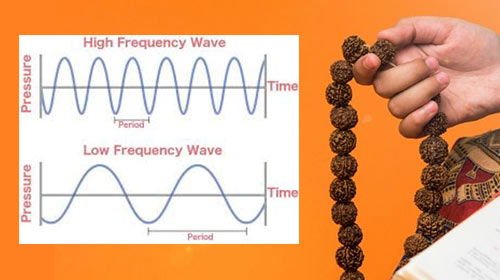
Rudraksha beads work best when worn on the body. They have the same vibrational frequency as the perfectly balanced corresponding chakra and develop resonance with the chakra in an attempt to bring it to an optimum state. Unlike gems it is not necessary for Rudraksha to touch the body to show its effects. But the method of wearing is very important. Similar to gems when worn on specific fingers or specific parts of the body, they give superior results. The powerful combinations of different types of Rudraksha strung as per RRST impacts different chakras of human body.

Mostly found in the South Eastern Asian islands of Java, Sumatra, Borneo, Bali, Iran, Timor (Indonesia) and parts of the South Asian Kingdom of Nepal, Rudraksha beads are considered the most potent healing beads and belong to the tree family Elaeocarpus Ganitrus. Around 70% of the Rudraksha trees are found in Indonesia, 25% in Nepal and 5% in India. They were first spotted in Indonesia and now grow in Nepal, Haridwar, Sri Lanka, and Malaysia.
Nepal beads are larger in size and thorny with several projections and have deep clear mukhis. The size of Nepalese beads varies from 14mm–40mm with an average size of 24 mm, whereas Java beads are much smaller in size with a smoother surface and mukhi lines are visible as white lines from one hole to the other very close to the surface and not etched very deep. Java bead sizes vary from 4 mm to 25 mm, with an average size of 12 mm.
Both varieties of Nepal and Java beads range from 1 to 21 mukhi, inclusive of Ganesh, Gauri Shankar, Savar, and Trijuti Rudraksha. In both varieties, the number of seeds inside is equal to the number of mukhi lines on them. So 2 mukhi Rudraksha has 2 seeds, 8 mukhi will have 8 seeds, 14 mukhi will have 14 seeds and so on.
Both have a natural hole, which is a hollow cavity in the center of the bead that can be easily cleared manually without drilling.
Effect-wise, both varieties work on balancing chakras and healing the mind, body, and spirit in all aspects. While some people love the Nepal beads for their beauty, some find the Java beads more convenient to wear on a daily basis. Nepal beads start resonating with the body in a period of 4-5 days, while Java beads take about 8–10 days to align with the body due to their smaller surface area. But as they are worn regularly on the body, they both show similar healing properties over a longer period of time.
At Chakra Yog, we follow a strict selection procedure wherein each bead is tested for genuineness, completeness of mukhis, health, high quality, energy levels, and uniformity. Beads go through energizing rituals using Vedic mantras. Light sandal paste and sandal oil are applied to them in this process. The energized beads combination is then ready to be shipped to the client.
On the other hand, Rudraksha trees in Haridwar or South India/Sri Lanka are not similar to those in Indonesia and Nepal. Beads there are found to have no natural holes and also have a very limited variety of mukhis, which range from 1 mukhi to 8 mukhi as visible in the outer structure. Internally, they show only one seed and thus are not attributed to being true Rudraksha beads.
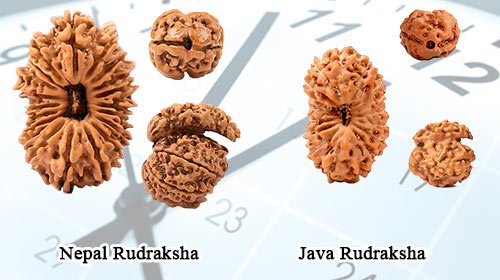
The effects of Nepal beads can be seen much faster as they have wider surface area. However testimonials and feedbacks received from clients using Nepal as well as Java beads are quiet similar. Both have reported excellent results. So, all depends on the personal preference of the wearer. All japa malas and the Rudraksha bead malas ranging in size from 2mm-14mm (normal and chikna variety) come from Indonesia only. These have been worn since times immemorial for health, spirituality, peace and for mantra japa.


